Chicago Electric 92907 Assembly And Operating Instructions Manual
- Category
- Power impact wrenches
- Type
- Assembly And Operating Instructions Manual
This manual is also suitable for

1/2” Drive 1/2” Drive
1/2” Drive 1/2” Drive
1/2” Drive
Impact WrenchImpact Wrench
Impact WrenchImpact Wrench
Impact Wrench
ASSEMBLY AND OPERATING INSTRUCTIONS
3491 Mission Oaks Blvd., Camarillo, CA 93011
Visit our Web site at http://www.harborfreight.com
Copyright © 2005 by Harbor Freight Tools
®
. All rights reserved. No portion of this
manual or any artwork contained herein may be reproduced in any shape or form
without the express written consent of Harbor Freight Tools.
For technical questions and replacement parts, please call 1-800-444-3353
92920
92907
18v18v
18v18v
18v
24v24v
24v24v
24v

SKU 92920 and 92907
For technical questions please call 1-800-444-3353
Page 2
Specifications
For Model 92920 18 volt version:
For Model 92907 24 volt version:
Save This Manual
You will need the manual for the safety warnings and precautions, assembly
instructions, operating and maintenance procedures, parts list and diagram. Keep
your invoice with this manual. Write the invoice number on the inside of the front
cover. Keep the manual and invoice in a safe and dry place for future reference.
Safety Warnings and Precautions
WARNING: When using tool, basic safety precautions should always be fol-
lowed to reduce the risk of personal injury and damage to equipment.
Read all instructions before using this tool!
1. Keep work area clean. Cluttered areas invite injuries.
2. Observe work area conditions. Do not use machines or power tools in
damp or wet locations. Don’t expose to rain. Keep work area well lit. Do not
use electrically powered tools in the presence of flammable gases or liquids.
3. Keep children away. Children must never be allowed in the work area. Do
not let them handle machines, tools, or extension cords.
:noitcurtsnoC
esaCcitsalPdedloM
livnAleetSnobraChgiH
revoCtnorFmunimulAtsaC
:deepS
MPR0591-0elbairaV
esreve
RdnadrawroF
:egatloVCDV81:evirDerauqS"2/1
:euqroT
esiwkcolcsbl/tF511
esiwkcolcretnuocsbl/tF001
:emiTegrahClai
tinI
:emiTegrahceR
setuniM09
ruoH1
:deepStcapmIMPB0071:emiTnuR.xorppAsetuniM03
llarevO
:snoisnemiD
H"8/1-01xW"8
/3-3xL"9:thgieWteN.sbl2.11
:noitcurtsnoC
esaCcitsalPdedloM
livnAleetSnobraChgiH
revoCtnorFmunimulAtsaC
:deepS
MPR0002-0elbairaV
esreve
RdnadrawroF
:egatloVCDV42:evirDerauqS"2/1
:euqroT
esiwkcolcsbl/tF531
esiwkcolcretnuocsbl/tF521
:emiTegrahClai
tinI
:emiTegrahceR
setuniM09
ruoH1
:deepStcapmIMPB0082:emiTnuR.xorppAsetuniM03
llarevO
:snoisnemiD
H"8/1-01xW"8
/7-3xL"9:thgieWteN.sbl1.21
REV 01/06

SKU 92920 and 92907
For technical questions please call 1-800-444-3353
Page 3
4. Store idle equipment. When not in use, tools must be stored in a dry
location to inhibit rust. Always lock up tools and keep out of reach of children.
5. Use the right tool for the job. Do not attempt to force a small tool or
attachment to do the work of a larger industrial tool. There are certain
applications for which this tool was designed. It will do the job better
and more safely at the rate for which it was intended. Do not modify this
tool and do not use this tool for a purpose for which it was not intended.
6. Dress properly. Do not wear loose clothing or jewelry as they can be caught
in moving parts. Protective, electrically non-conductive clothes and non-skid
footwear are recommended when working. Wear restrictive hair covering to
contain long hair.
7. Use eye and ear protection. Always wear ANSI approved impact safety
goggles. Wear a full face shield if you are producing metal filings or wood
chips. Wear an ANSI approved dust mask or respirator when working around
metal, wood, and chemical dusts and mists.
8. Do not overreach. Keep proper footing and balance at all times. Do not
reach over or across running machines.
9. Maintain tools with care. Keep tools sharp and clean for better and safer
performance. Follow instructions for lubricating and changing accessories.
Inspect tool cords periodically and, if damaged, have them repaired by an
authorized technician. The handles must be kept clean, dry, and free from oil
and grease at all times.
10. Disconnect power. Unplug the Battery Charger when not in use.
11. Remove adjusting keys and wrenches. Check that keys and adjusting
wrenches are removed from the tool or machine work surface before
plugging it in.
12. Avoid unintentional starting. Be sure the switch is in the Off position when
not in use and before plugging in. Do not carry any tool with your finger on
the trigger, whether it is plugged in or not.
13. Stay alert. Watch what you are doing, use common sense. Do not operate
any tool when you are tired.
14. Check for damaged parts. Before using any tool, any part that appears
damaged should be carefully checked to determine that it will operate properly
and perform its intended function. Check for alignment and binding of moving
parts; any broken parts or mounting fixtures; and any other condition that may
affect proper operation. Any part that is damaged should be properly repaired
or replaced by a qualified technician.

SKU 92920 and 92907
For technical questions please call 1-800-444-3353
Page 4
15. Guard against electric shock. Prevent body contact with grounded surfaces
such as pipes, radiators, ranges, and refrigerator enclosures.
16. Replacement parts and accessories. When servicing, use only identical
replacement parts. Use of any other parts will void the warranty. Only use
accessories intended for use with this tool. Approved accessories are
available from Harbor Freight Tools.
17. Do not operate tool if under the influence of alcohol or drugs. Read
warning labels on prescriptions to determine if your judgment or reflexes are
impaired while taking drugs. If there is any doubt, do not operate the tool.
18. Maintenance. For your safety, service and maintenance should be performed
regularly by a qualified technician.
19. Pacemaker safety warning. People with pacemakers should consult with
their physician(s) before using this product; operation of equipment in close
proximity to a heart pacemaker could cause interference or failure of the
pacemaker.
Note: Performance of the charger may vary depending on variations in local line volt-
age. Extension cord usage may also affect tool performance.
Warning: The warnings, cautions, and instructions discussed in this instruc-
tion manual cannot cover all possible conditions and situations that may oc-
cur. It must be understood by the operator that common sense and caution
are factors which cannot be built into this product, but must be supplied by
the operator.

SKU 92920 and 92907
For technical questions please call 1-800-444-3353
Page 5
Unpacking
When unpacking, check to make sure that the product is intact and undamaged.
1/2” Drive Cordless Impact Wrench (18v or 24v depending on the model purchased)
Rechargeable Battery
Plastic Storage Case
If any parts are missing or broken, please call Harbor Freight Tools at the number
on the cover of this manual.
NOTE: Batteries will not reach full
charge the first time they are charged.
Allow several cycles (operation followed
by recharging) before the battery will
become fully charged.
Battery Temperature Warning:
WARNING: Battery explosion may
cause serious personal or property
injury including death. Charge the
battery only within a 50° to 100° tem-
perature range. Lower temperatures
may inhibit charging. Higher tempera-
tures increase chance of battery failure,
including explosion.
Battery Charger Safety:
1. Charge the battery pack only with the included charger. Use of other chargers
may cause battery failure including explosion.
2. Ensure that the battery charger is connected to a 120 VAC, 60Hz power
supply with circuit breaker only.
Using the Battery Charger

SKU 92920 and 92907
For technical questions please call 1-800-444-3353
Page 6
Working with the Rechargeable Battery
Charging the Battery Pack:
1. Battery packs are normally shipped with low or no charge to prevent potential
problems during shipment. Before use, you must charge your new battery
pack. Initial charge time is approximately 90 minutes. Subsequent
recharge time is approximately 1 hour.
2. Plug the battery charger into a 120 VAC, 60Hz power outlet.
3. Insert the battery pack into the charger by aligning the rib on the battery pack
with the groove in the charger. Press the battery pack into place. The Green
LED will illuminate indicating that a battery is installed in the charger.
4. Press the “SET” button on the charger to start charging. The Green LED will
go out, and the Red LED will illuminate indicating that the battery is currently
charging.
NOTE: During recharging, the battery pack will become slightly warm to the touch.
This is normal and not a cause for concern. Do not keep the battery or charger
in an environment of extreme heat or cold. They will work best at room
temperature.
5. The red LED will remain on for approximately 1 hour while the battery charges.
When the battery is fully charged the Red LED will go out, and the Green LED
will illuminate indicating that the battery is fully charged.
6. When the battery is fully charged, remove the charged battery from the
charger, and unplug the charger from its power source. Put the charger away
for safekeeping. Do not leave the battery in the charger indefinitely.
PLEASE READ THE FOLLOWING CAREFULLY
THE MANUFACTURER AND/OR DISTRIBUTOR HAS PROVIDED THE PARTS DIAGRAM
IN THIS MANUAL AS A REFERENCE TOOL ONLY. NEITHER THE MANUFACTURER
NOR DISTRIBUTOR MAKES ANY REPRESENTATION OR WARRANTY OF ANY KIND TO
THE BUYER THAT HE OR SHE IS QUALIFIED TO MAKE ANY REPAIRS TO THE
PRODUCT OR THAT HE OR SHE IS QUALIFIED TO REPLACE ANY PARTS OF THE
PRODUCT. IN FACT, THE MANUFACTURER AND/OR DISTRIBUTOR EXPRESSLY
STATES THAT ALL REPAIRS AND PARTS REPLACEMENTS SHOULD BE UNDERTAKEN BY
CERTIFIED AND LICENSED TECHNICIANS AND NOT BY THE BUYER. THE BUYER AS-
SUMES ALL RISK AND LIABILITY ARISING OUT OF HIS OR HER REPAIRS TO THE ORIGI-
NAL PRODUCT OR REPLACEMENT PARTS THERETO, OR ARISING OUT OF HIS OR HER
INSTALLATION OF REPLACEMENT PARTS THERETO.

SKU 92920 and 92907
For technical questions please call 1-800-444-3353
Page 7
Installing the Battery Pack in the Tool
1. Place the battery pack in the tool, aligning the rib on the battery pack with the
groove in the tool.
2. Press the battery pack into the tool. Make sure that the latches on both sides
of the battery pack snap into place, and that the battery pack is secure in the
tool before beginning use.
Removing the Battery Pack
1. Locate the latches on both sides of the battery pack, and depress them to
release the battery from the tool.
2. Remove the battery pack from the tool.
Operation
WARNING: Some dust created by power sanding, sawing, grinding, drilling, and
other construction activities, contain chemicals known [to the State of California] to
cause cancer, birth defects or other reproductive harm. Some examples of these
chemicals are:
Lead from lead-based paints
Crystalline silica from bricks and cement or other masonry products
Arsenic and chromium from chemically treated lumber
(California Health & Safety Code 25249.5,
et seq.
)
CAUTION: Use only impact grade sockets, designed for impact wrenches. Stan-
dard sockets may break under the force created by this impact gun. Impact
sockets are available from Harbor Freight Tools.
1. Before inserting the battery pack into the tool, check to be sure that the
Trigger (32) operates properly, and returns to the OFF position when released.
2. Use only fully charged battery specifically designed for this tool. Insert the
Battery Pack (34) into the base of the handle. Ensure that the snap locks on
both sides are engaged securely holding the Battery Pack (34) in place.
3. Select an appropriate size 1/2” square drive impact socket (not included).
Press it onto the Impact Head (6). Be sure the socket is completely engaged,
and that the ball retainer on the Impact Head (6) will hold the socket in place.
4. The Impact Wrench is best suited for removing stuck fasteners or applying
final torque where high torque is required. Before using the Impact Wrench,
the fastener should be installed or removed as much as possible with a hand
tool or conventional powered socket tool.

SKU 92920 and 92907
For technical questions please call 1-800-444-3353
Page 8
5. Determine whether you want the Impact Wrench to turn clockwise or
counterclockwise. Press the Selector Switch (26) to the left for clockwise rotation
or to the right for counterclockwise rotation. CAUTION: Wait for the tool to stop
turning before moving the Selector Switch. Failure to do so may damage the tool.
6. To install or change the impact socket (not included) simply press the socket
onto or pull it off of the Impact Head (6). The Impact Head (6) is equipped with
a ball detent to hold the socket in place during use.
7. Place the impact socket over the fastener, brace yourself, and squeeze the
Trigger (32). CAUTION: This impact wrench will create substantial torque,
which you must be prepared to resist when using this tool.
8. When you have completed the operation, release the Trigger (32) to stop the
tool. Pull the socket off the fastener.
9. After installing the fastener, check the torque with a conventional torque
wrench (not included) to ensure that the correct torque has been applied. If the
torque is incorrect, correct it using the torque wrench.
Maintenance
Keep your tool clean and dry. When not in use, remove the battery and store both
tool and battery in its case in a dry, secure location.
Parts List
traPemaNyt'QtraPemaNyt'Q
1wercsxehlanretni481gniraeb1
2laes191gnisuohxobraeg1
3gnisuohdaeh102wercs2
4gnihsubtfahs112rehsawgnirps2
5r
ehsaw122draobdexif1
6
y'ssadaehtcapmi
&llableetsenosedulcni(
)kcolerofeno&gnirpseno
1
32noinip1
42rotom1
52tungnol4
7kcol
btcapmi162hctiwsrotceles1
8gniraebllab6272gnisuohtfel1
9redlohgniraebllab182gnisuohthgir1
01gnirps192wercs9
11redlohgnirps103kco
lbrotaidar1
21gniraebllab213rotcennocsrom1
31tfahsniam123reggirt1
41raegyratenalp233rotcennocyrettab1
51tfahsraeg243kcapyrett
ab1
61gnir153wercs )YLNO02929METI( 1
71teksaggniraeb163parts )YLNO02929METI( 1

SKU 92920 and 92907
For technical questions please call 1-800-444-3353
Page 9
Assembly Drawing
NOTE: Some parts are listed and shown for illustration purposes only and are not
available individually as replacement parts.
-
 1
1
-
 2
2
-
 3
3
-
 4
4
-
 5
5
-
 6
6
-
 7
7
-
 8
8
-
 9
9
Chicago Electric 92907 Assembly And Operating Instructions Manual
- Category
- Power impact wrenches
- Type
- Assembly And Operating Instructions Manual
- This manual is also suitable for
Ask a question and I''ll find the answer in the document
Finding information in a document is now easier with AI
Related papers
-
Chicago Electric 95000 Assembly & Operating Instructions
-
Chicago Electric 91790 Assembly And Operating Instructions Manual
-
Chicago Electric 95000 User manual
-
Chicago Electric 95000 User manual
-
Chicago Electric 95633 Assembly And Operating Instructions Manual
-
Chicago Electric 93449 Assembly And Operating Instructions Manual
-
Chicago Electric 92115 User manual
-
Chicago Electric 67845 User manual
-
Chicago Electric 92798 User manual
-
Chicago Electric 96448 User manual
Other documents
-
Spalding M415571 User manual
-
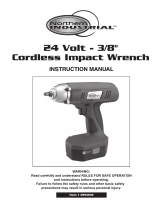 Northern Industrial Tools Cordless Impact Wrench Owner's manual
Northern Industrial Tools Cordless Impact Wrench Owner's manual
-
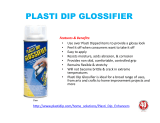 Plasti Dip 112126 User guide
Plasti Dip 112126 User guide
-
Harbor Freight Tools 67031 User manual
-
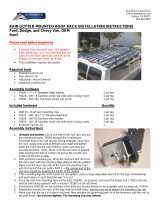 Aluminess Products RAIN GUTTER MOUNTED ROOF RACK Installation guide
Aluminess Products RAIN GUTTER MOUNTED ROOF RACK Installation guide
-
Harbor Freight Tools Triple Ball Trailer Hitch Mount with Hook User manual
-
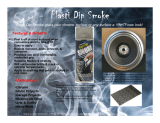 Plasti Dip 112206 User guide
Plasti Dip 112206 User guide
-
MyCharge AMPMINI User manual
-
Harbor Freight Tools 239 User manual
-
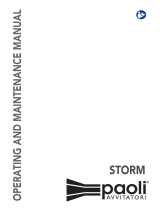 Paoli Avvitatori STORM A.08.0005 Operating And Maintenance Manual
Paoli Avvitatori STORM A.08.0005 Operating And Maintenance Manual













